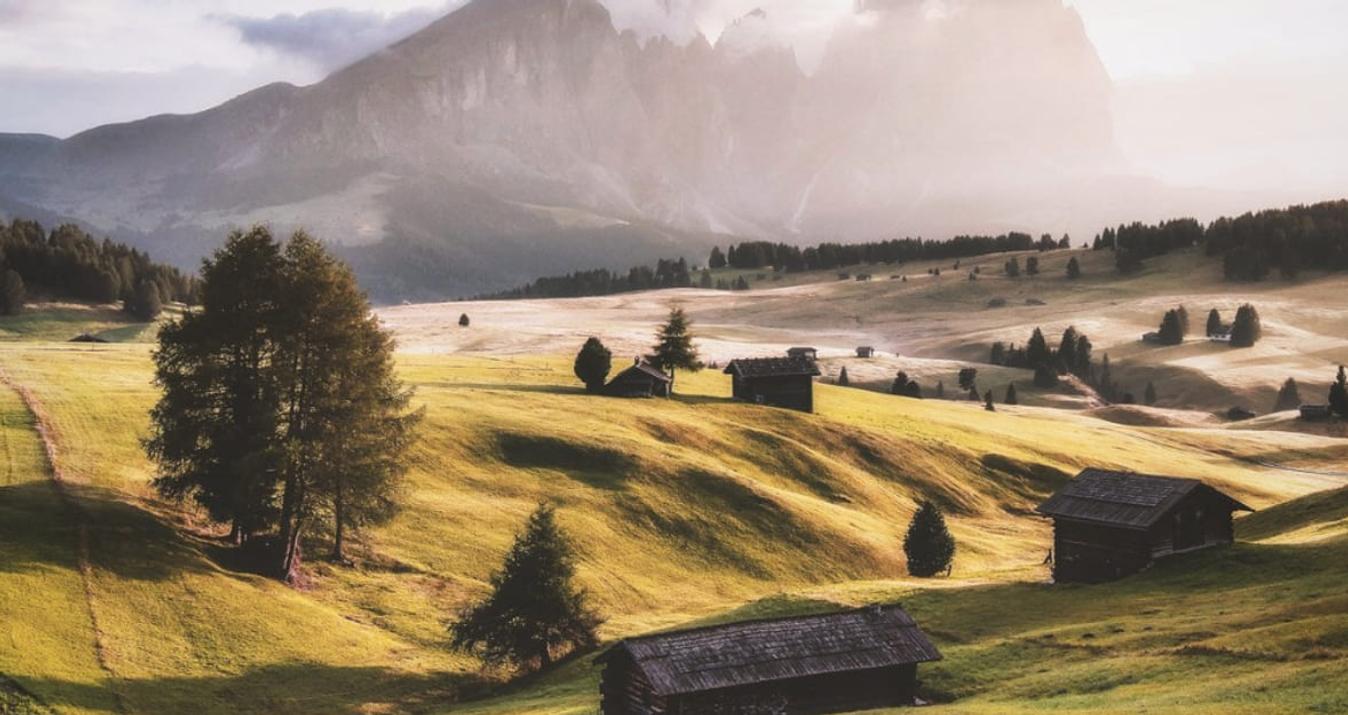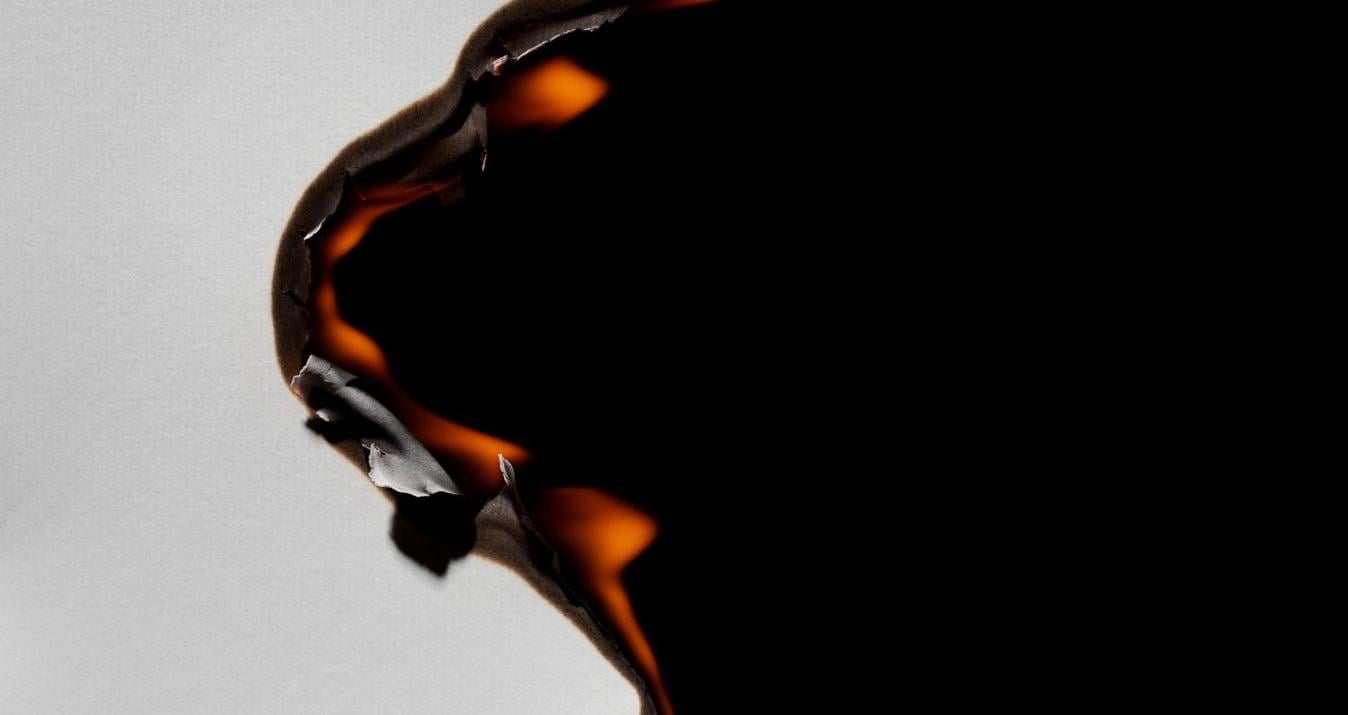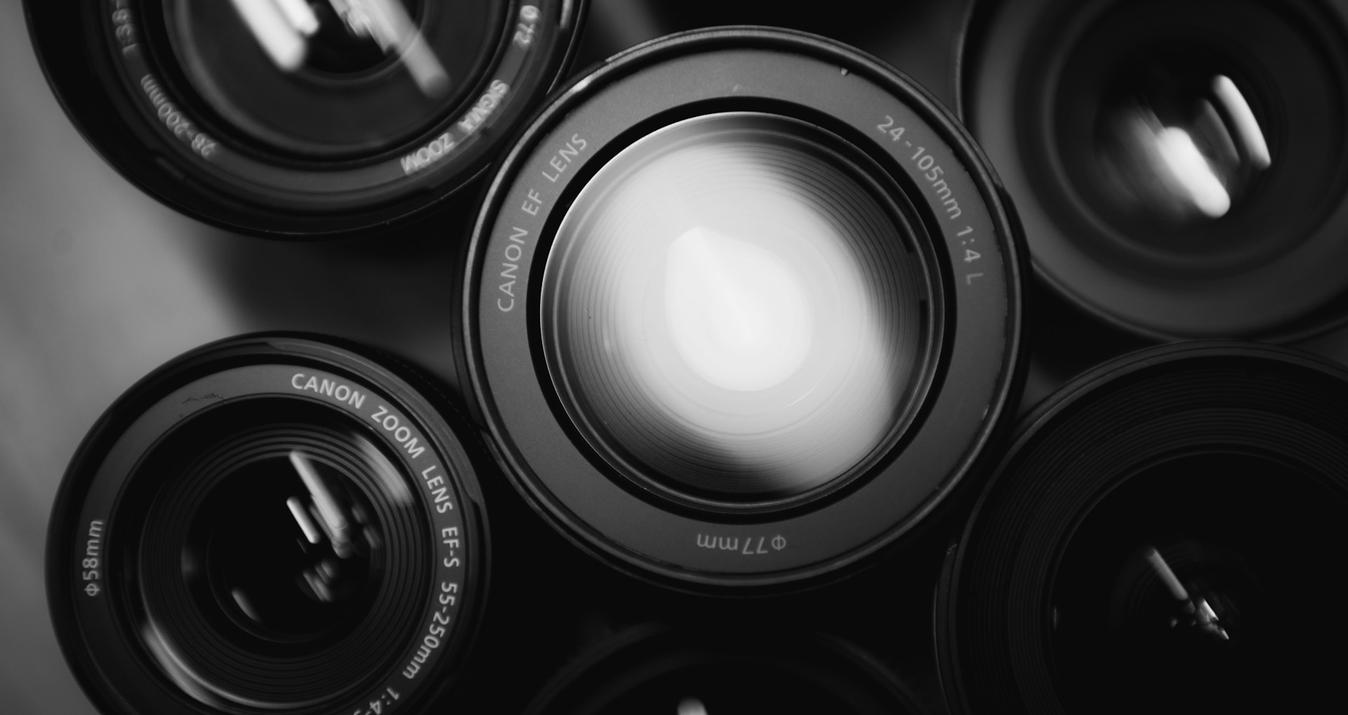Top Secrets of Juxtaposition in Photography Revealed
February 24, 2023

The best guide to juxtaposition for photographers – learn the meaning, core principles, efficient techniques, and top practices of juxtaposition!
For most of us, the word juxtaposition sounds weird and its meaning appears blurry. It’s hard to guess what this term means in photography – especially for a non-native English speaker who’s also a beginner photographer. So before learning the specifics of building a composition and using the principles of juxtaposition, let’s start from the basics. We’ll first define juxtaposition as a concept.
What is juxtaposition in photography?
Juxtaposition in photography is a technique, which essence is to place contrasting elements in the same frame and tell the viewer their story. The juxtaposition in your photography can combine such contrasting things as new and old, man-made and industrial, light and dark, or two different emotions.
Merriam-Webster describes juxtaposition as “the act or an instance of placing two or more things side by side often to compare or to contrast an interesting effect.” The Collins Dictionary defines juxtaposition as “the fact that they [two contrasting objects, images, or ideas] are placed together or described together, so that the differences between them are emphasized.” Finally, the juxtaposition definition provided by the Cambridge English Dictionary simplifies the concept: “to put things that are not similar next to each other.”
To convey the contrast of the final image, you may need to use a photography composition, forced juxtaposition, or props. Are there differences or similarities between forced and visual juxtaposition in photography composition? Of course, there are also very simple ones. The similarity is that the result of each will be a complex compositional photo consisting of two different features. And the difference is that in visual you notice that juxtaposition exists and take your photo, and in forced juxtaposition, you have to look for it and create an interesting scene.
To summarize these attempts to define juxtaposition, we can say that it’s about the principle of comparison. A photographer puts two objects close to each other and tries to attract the viewer’s attention to their differences. When the contrast between these two objects is the first thing that catches the viewer’s eye, juxtaposition is achieved.
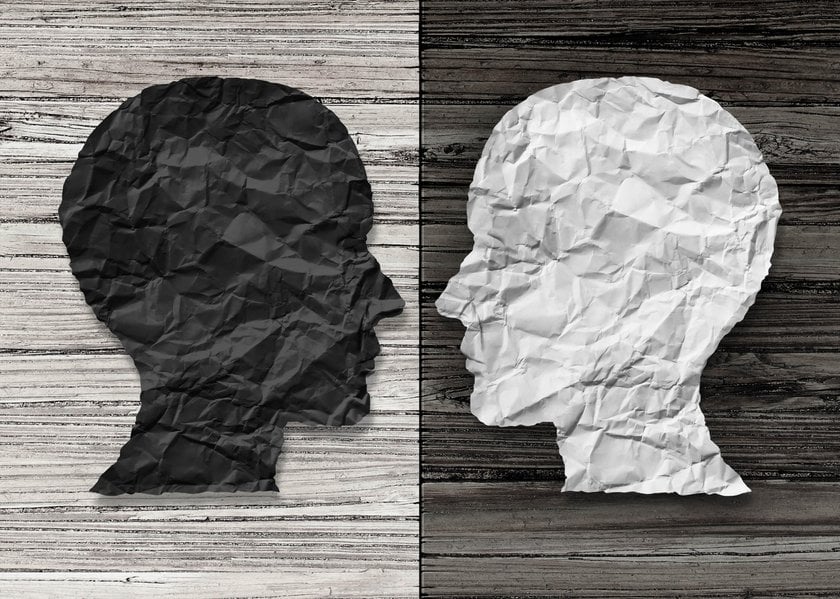
Why do photographers use juxtaposition?
Modern photographers like to use this way to show different architectural styles or cute compositions, but also contrasts between social layers or environmental issues. And this shows how important juxtaposition in art is. After all, such photos excite people's minds and make them think about what's going on around them.
Too often professionals insist on global problems of society or the environment through street photography. They create juxtaposition in such a way that people can't pass by and take a closer look and think about it.
At the same time, their colleagues use juxtaposition to show the beauty of combining everyday things, even inanimate ones. For example a fiery orange and sunglasses or a dog playing on the grass with a little ball. All this brings us tenderness and pleasure. And this can also be called the best juxtaposition in photography.
How to take juxtaposition photos?
I hope that after reading this you have the desire to try juxtaposition in your photography. If so, here are a few photography tips that may come in handy for you.
Compare your photos
For example, you took two pictures: a street scene where a man is a homeless person and an emotionless woman on the left in a beautiful expensive dress. Or another example is a small coffee shop with different architectural styles in the foreground and a gray unremarkable but huge skyscraper in the background. And maybe that skyscraper in the background overshadows something beautiful and important to the people of this city, and a coffee shop is already standing in its way. These examples can be compared to light versus dark. So when working on a juxtaposition, establish as many layers of meaning and connections as possible. After all, your story should be read through your photo.
Shadows and reflections
Add clear shadows or reflections to your photo to add more distinct details. Use mirrors or even water to reflect another reality.
Experiment with color schemes
Merge dull and bright colors. Or even try to combine two lush colors using color palettes. Use opposite colors. There are a lot of apps on the web now that will tell you interesting combinations.
The most important thing you have to do is develop your idea and find your models. And this little tutorial will help you with the rest.
How to excel at juxtaposition
As you might have concluded from the various ways to define juxtaposition, juxtaposition in art reveals itself in the sharp contrast in an image. To make such a contrast evident, you as the creator should emphasize the particular elements that are different.
To gain critical skills in the art of juxtaposition, a photographer should learn how to achieve the strong presence of chosen objects within the frame. But sharpening the differences isn’t the only task for a master of art juxtaposition. No less important is demonstrating the similarities that unite objects. By doing so, the contrast becomes even more apparent. An image of two flowers of the same type but of a different color applies the principle of juxtaposition better than a picture of a flower and a lion.
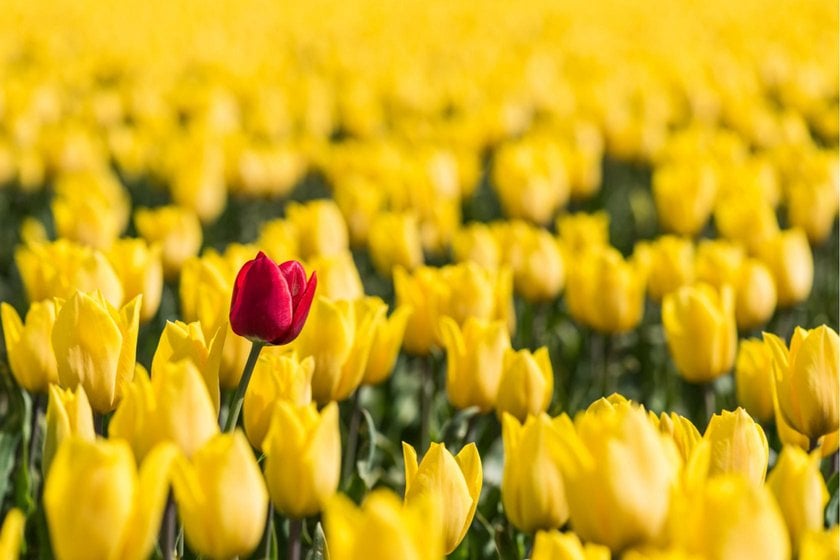
Moreover, juxtaposition in art reveals itself when a sharp contrast is not obvious – but inevitably appears in the imagination. The example of a flower and a lion could work better if the artist decided to contrast a house plant and a representative of wildlife. In this case, the viewer would have to think over the photo and guess the underlying juxtaposition. In other words, the whole story behind the juxtaposing becomes evident in the minds of viewers only. Another great example of juxtaposition is the contradiction between a human and a machine. This is a powerful way to sharpen the contrast. Additional social, cultural, and historical layers significantly contribute to turning a simple image into an example of juxtaposition art.
But photography is not the only sphere in which juxtaposition is applied. It’s also widely used in drawing, sculpture, literature, and other types of visual art. For example, one of the greatest techniques of juxtaposing can be found in the paintings of René Magritte. In The Son of Man (1964), Magritte combines an image of a man and an apple. In addition to the obvious human-nature contradiction, Magritte demonstrates the complicated contrast between two types of visible: what is hidden and what is present. And this complex distinction turns this masterpiece into a true example of juxtaposition in art.
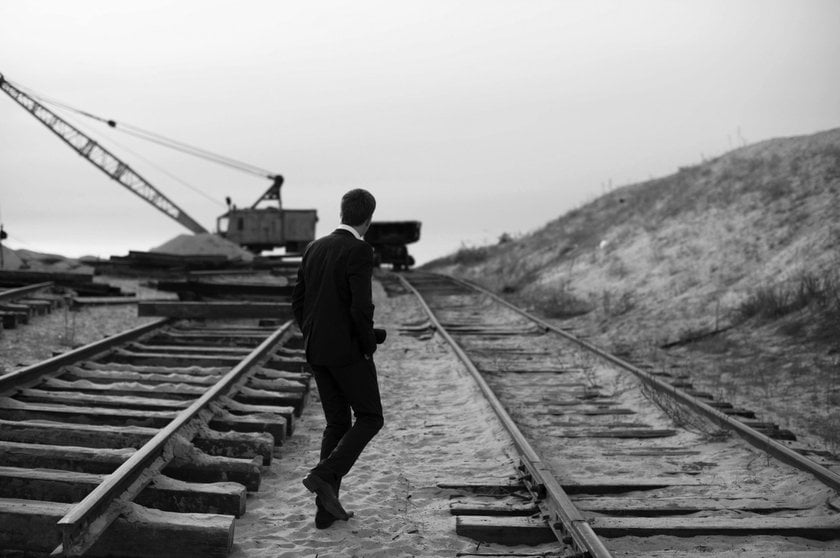
There are also numerous outstanding juxtapositions in the art of photography. Let’s see how you can contribute to this golden collection! But first, get prepared by installing this photo color editor – you’ll need it for processing your photos.
How to master juxtaposition photography
If you look closer at the images you’ve already captured, you may notice traces of juxtaposition in them. Most of us have taken a portrait of a girl in front of a building, a landscape of a flowery field, or an image of a flower and a cat. But how can you make these images work so that one object juxtaposes the other? The answer is simple – tell a story. Without a story, your contrasting objects will never be taken as juxtapositions.
So to apply juxtaposition in photography, you can use forced perspectives, design contrasting props, or search for an interesting background (at least, this is what the Light Stalking photo blog recommends). At the same time, note that the effect you achieve can be very different – from creating a comic poster to sharpening the striking differences in income between people in a photograph.
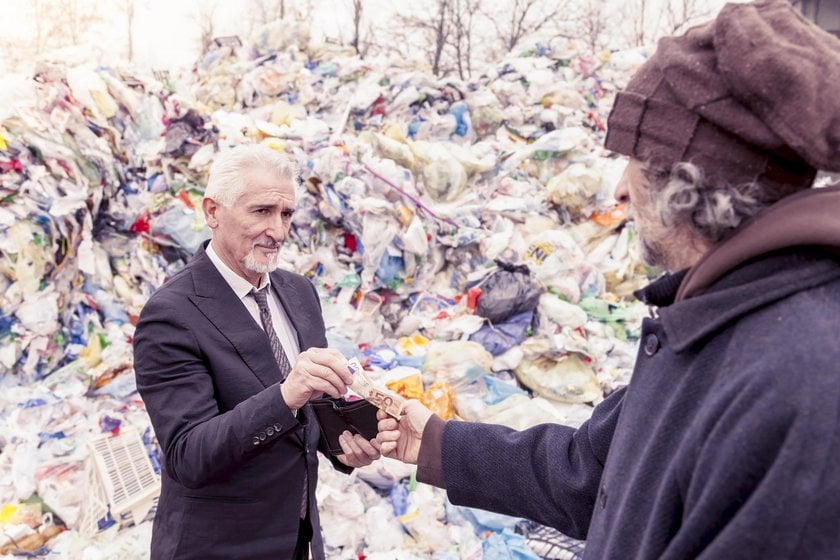
The best examples of juxtaposition in photography reflect a deep understanding of each separate object. Background knowledge allows you to emphasize similarities and differences in the most comprehensive and challenging manner. And the more links you are able to establish between two objects, the more layers of juxtaposition you offer to your spectators – and the more professional your juxtaposition in photography will appear. In a great photo, the way one object juxtaposes the other looks like a clear artistic choice.
After learning the theory, do you feel the need for some visual inspiration before juxtaposing objects in your own photographs? Here are the best examples of juxtaposition at your service!
9 great examples of juxtaposing
Among basic examples of juxtaposition are the contrast between animate and inanimate, big and small, and black and white. These are widely used in classic photography – the famous work of Pablo Picasso with “bread hands” and the works of Henri Cartier-Bresson are examples of this. Also, when shooting humans, the contrasts between skinny and chubby bodies and emotional and indifferent facial expressions work well.
But let’s investigate closer each way to apply juxtaposition in images.
1. Animate vs inanimate
In this example of juxtaposition in photography, you as the artist should search for an interesting contrast between a person and the physical objects around them. An incredible example of juxtaposition is the portrait of Pablo Picasso sitting at the table with “bread hands,” chosen as the best photograph in this category by Expert Photography. Look to it for inspiration!
2. Size juxtapositions
You can juxtapose objects of different sizes. The appearance of an adult close to an infant is always eye-catching – and it has even turned into a basic rule for family portraits. At the same time, juxtaposing size works not only for people but also for contrasting people and objects with nature. Called juxtaposition of scale, this type of photography includes a wide range of images, most of which show a tiny protagonist in the foreground and infinite nature in the background.
Even if you’ve failed to find the proper plot for juxtaposing in real life, don’t worry – you can always do it at the post-processing stage. A few layers and different images in Photoshop and a great example of juxtaposition is ready.
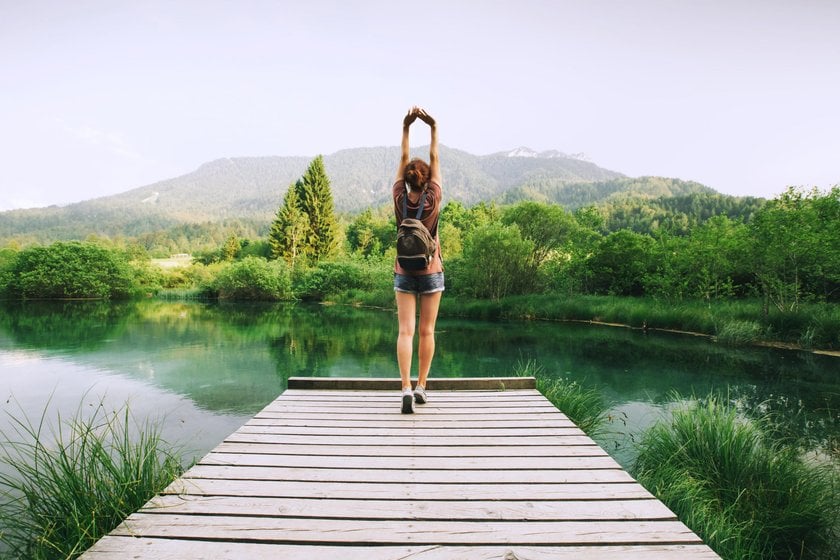
3. Classic black-and-white contrast
For a long time, black and white were the only color options for photographers. Nevertheless, the masters managed to make this simple scheme work in an inspirational manner. Early examples of outstanding juxtapositions still inspire many photographers. Just look at the works of Henri Cartier-Bresson to see how breathtaking two-color art can be.
So don’t hesitate to go back to black-and-white and establish a sharp contrast too!
4. Shape differences
By combining various shapes, a photographer can create splendid juxtapositions – by placing slim and big people together or searching for circles and rectangles in urban architecture. In any case, adding shadows contributes to an even stronger contrast. So search for them in real life – or sharpen the contrast in a photo editor.

5. Differences in body language
Juxtaposing facial and body expressions can be powerful. The best examples include the contrast between happy and sad, angry and excited, and dancing and sitting people. This type of juxtaposition also inevitably involves the spectators’ imagination, challenging them to discern the emotions.
At the same time, things can also have different moods – especially, when it comes to the opposition between static and dynamic objects. The juxtaposition between natural tranquility and action is another way to represent differences in mood – like a strong storm on the sea under a peaceful blue sky.
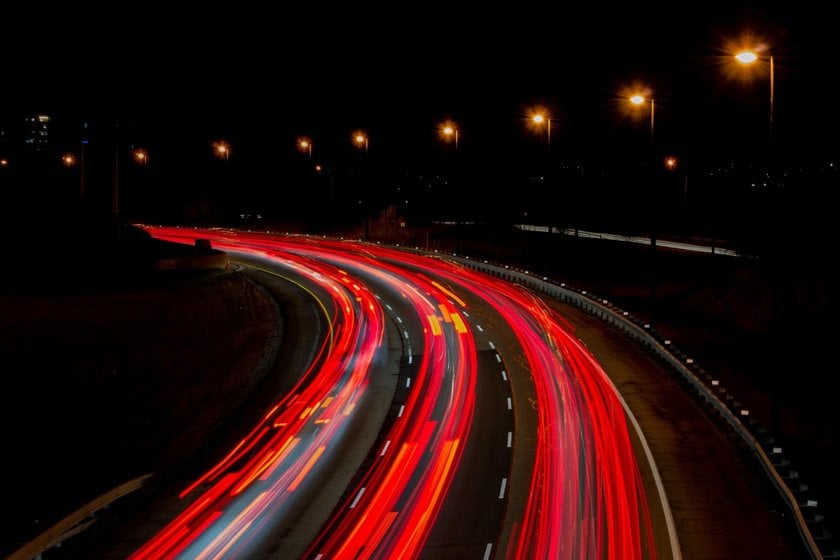
6. Humans and machines
We’ve already mentioned the juxtaposition of humans and machines as one of the greatest and most valued contrasts. While practicing it, keep in mind that the additional layer can appear by turning the natural object into an example of machinery or, on the contrary, by showing the human-like traits of a vehicle.
The distinction between a plant and a building works well here. To dramatize the effect, feel free to use the tools provided by the best photo editing software Luminar Neo. In this program, you can experiment freely and create impressive images: turning a tree trunk into the core of an atomic explosion, for example.

7. Age differences
Not only humans but also physical objects can be young and old. You might try juxtaposing outdated and brand-new devices, or a dilapidated building and a skyscraper. Also, places that combine vintage and modern styles make for nice juxtapositions.
And of course, the image of a grandfather and a child works well – but unfortunately, it’s too obvious. Instead, try to juxtapose in one photograph the various stages of the same person’s life – this looks much more creative.
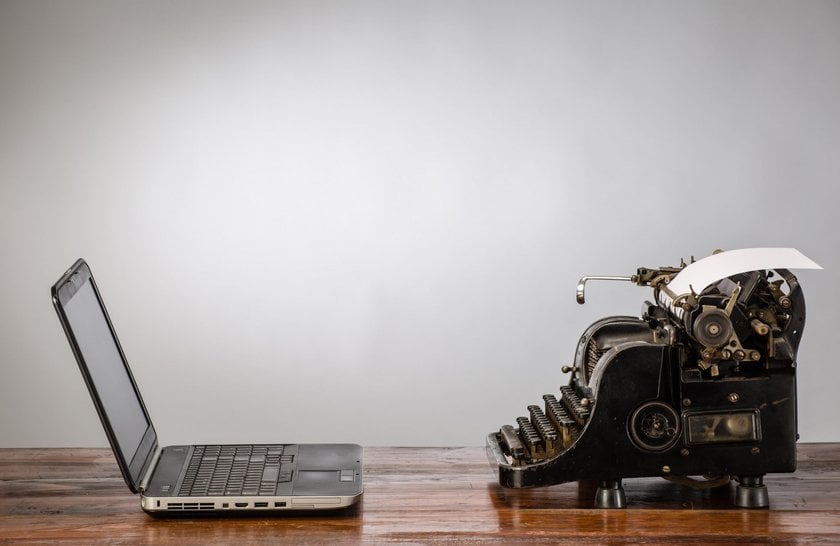
8. Patterns and colors
As an interesting example of juxtaposition, establishing a strong link between a piece of clothing on a person and the same pattern in an urban environment works great. At the same time, repeating the image below is really hard. As a photographer, you should be both highly attentive and demonstrate outstanding skills in composition to capture only the necessary elements. But of course, that’s a challenge worth taking.
And the nice thing here is that at the learning stage, you can fix problems in a photo editor. For instance, you can work with a grey background and create masks on your images to help the a pattern shine bright like a diamond.
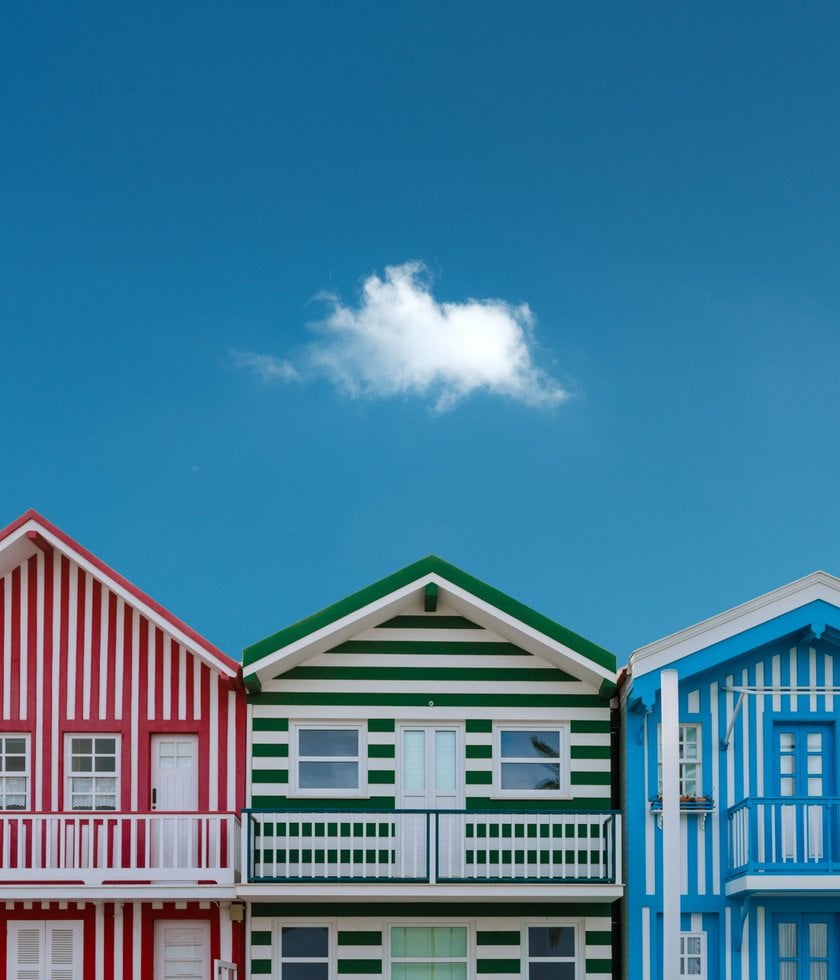
9. Differences in income
Juxtaposing a beggar and a businessman is a classic move. At the same time, we recommend being more creative and searching for other objects that reflect differences in wealth. This type of juxtaposition can be easily seen in aerial photos of big cities in South America, Asia, and Africa where there are whole districts for rich and poor neighborhoods.
As another example of juxtaposing wealth, poverty can be contrasted with propagandistic ideals. In these images, the contrast between rich and poor gains additional political context that empowers the juxtaposing of the objects and/or people. If you manage to reflect multiple prejudices in the same photo, you’ll reach the peak of art juxtaposition.
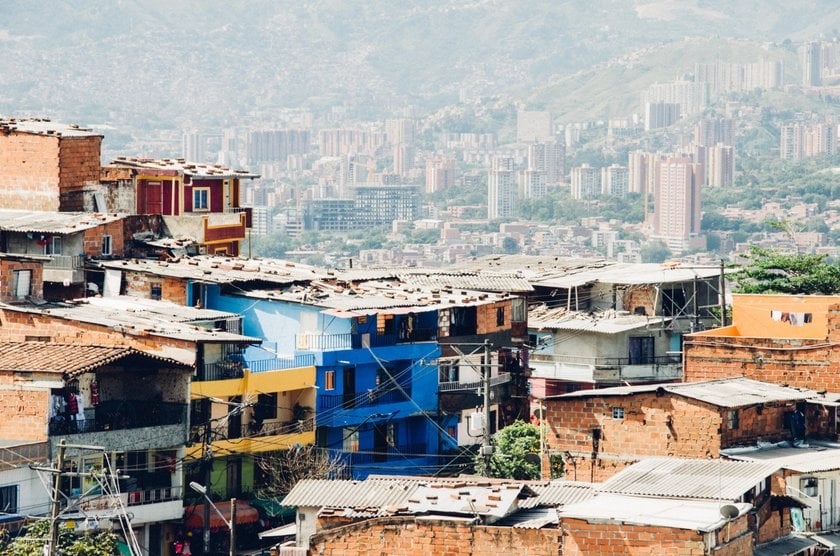
Juxtaposition is common in amateur photography. But the art of juxtaposing is a professional skill that requires proper attention to the real-life environment and lots of practice. In short, you should become a pro at candid photography to master the art of juxtaposition. But even before that happens, you can still create outstanding contrasts in photos. All you need is an easy-to-use professional photo editor. Get one by pressing the button below!



